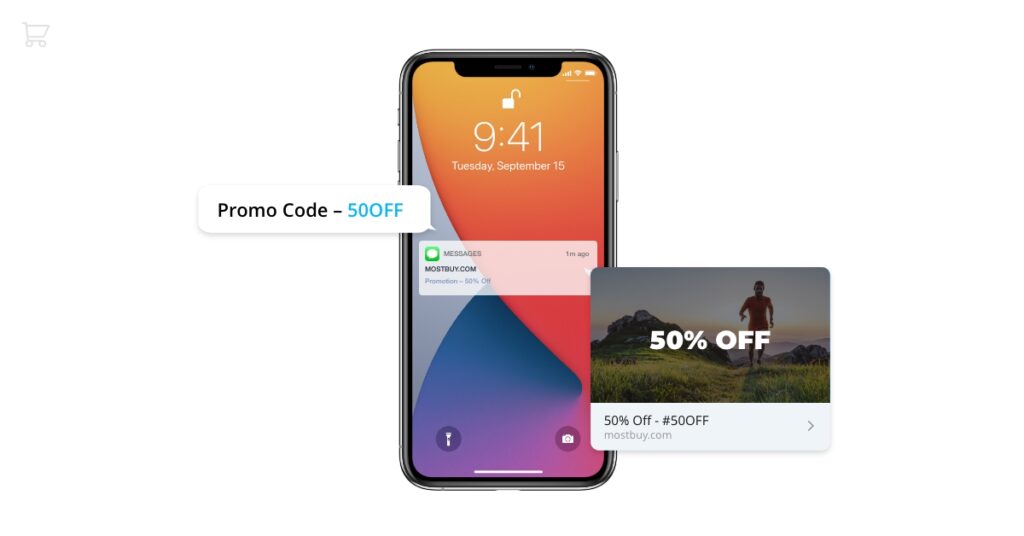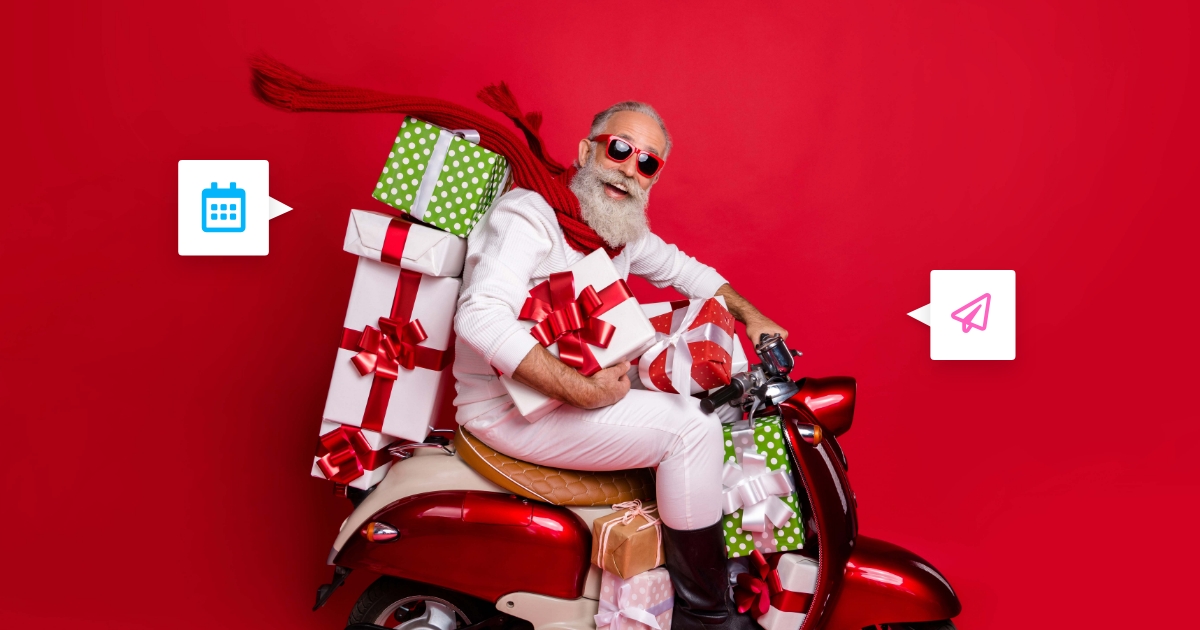It’s that time of the year again – all business owners, especially those in the ecommerce marketing space, probably starting to send a high volume of emails. Every year at Maropost we see at least a 200% increase in send volume over the holiday season compared to other times. Just last year we processed more than 429 million emails during the Black Friday & Cyber Monday season.
Over the past few weeks, we shared a couple of holiday-related tips aimed at boosting sales this season. In this blog, we’ll talk about a marketing strategy that will help you achieve high deliverability rates, maximize your ROI on your holiday emails and minimize cart abandonment during this busy shopping season. Keep reading for the best holiday sale checklist!
- Begin Now
- Send Relevant & Valuable Content
- Stand Out from the Crowd
- Utilize Gmail Annotations
- Optimize for Mobile
- Try SMS
- Don’t Stop Me Now
- Geek Out a Bit
- Avoid Email Fatigue
- Segment the Audience
- Expand your Audience (Wisely)
- Always Monitor
1. Begin Now
Start early. Even earlier than you think. And earlier than last year.
According to a survey by the National Retail Federation in 2020, over 40% of holiday shoppers started shopping earlier than they normally do. So you’ve got to be prepared, and that means your online stores, inventory, emails and other promotions.
Customers need ample time to mentally prepare to shop. They also need to find out or be reminded about your brand so they consider your offers for their holiday shopping.
Given the ongoing impact of the COVID-19 pandemic, it is a good idea to jump-start holiday promotions and deals, so consumers can shop safely and early to avoid last-minute stress of long lines and shipping delays.
You can use a variety of channels for your holiday marketing:
- Social media for general brand awareness
- Email for exclusive offers (free shipping?), sale announcements and purchase confirmations
- SMS for updates and special offers (free returns?)
Last but not the least, create anticipation for your upcoming sales by sending a series of sneak peek emails leading up to your big sale.
2. Send Relevant & Valuable Content
Want to keep your audience always engaged? Send enticing offers that your competitors can’t beat. The data from our customers clearly shows that dynamic content increases email engagement. That’s because dynamic content allows you to send content that is relevant to each subscriber. You can send personalized content based on user behavior or data you have about your subscribers.
Here are a few examples:
- Demographic information – age, gender, location, etc
- Subscriber preferences
- Subscriber interests
- Target subscribers that are opening & clicking certain types of content (e.g. infographics, blogs, videos)
Just imagine sending tailored holiday gift ideas based on each recipient’s interests. Now that’s personalization!
Important note: ensure your subscribers get a clear and straightforward offer to help you generate sales. Make CTAs prominent and repeat them a few times throughout the email
Finally, make sure to clearly communicate important information like:
- The last day for shipping (to get the order in time for the holidays)
- Promotion end day
- Inventory running low (especially on popular products)
3. Stand Out from the Crowd
Subscribers’ inboxes will be crowded during the holidays, so you have to find creative ways to make your emails stand out. One of the proven strategies that worked well for our customers year after year is personalized subject lines. You can include the recipient’s first name and holiday emojis like a snowman or Santa Claus.
To make the subject line even more effective, use power words like discount, savings and free shipping. Sprinkle in a sense of urgency – it always works! Try phrases like order now, limited-time, today-only and exclusive.
Another way to stand out is using pre-headers. In fact, your subject line and preheader text can work in tandem to create interest and encourage readers to open your email.
Using Gmail annotations is another great strategy. By default, Gmail puts all marketing and promotional content emails in the promotions tab. Annotations are a way of highlighting your promotional emails in that promotions tab! Keep reading about it in the next section.
4. Utilize Gmail Annotations
A Gmail annotation is a snippet of an HTML code that you add to the HTML header in your emails. This code snippet displays several pieces of information like discount codes, expiration dates or logos from your email as a preview. That means that people will see it even before opening the email! Indeed, studies have shown that annotating emails can boost open rates, clicks and conversions from Gmail users.
Email annotations use recipients’ interests to automatically highlight and group the most relevant email at the top of the promotions tab. With annotation, you literally get additional space in the Inbox to showcase an enriched preview of your email! Think of it as a movie teaser and use it wisely.
Right now, Gmail annotations are limited to the Gmail app on both Android and iOS. As many people use Gmail on their phones, it’s a worthwhile thing to add.
5. Optimize for Mobile
At this point, this probably goes without saying.
According to a recent survey, last year more than 60% of US consumers used their mobile phones for their entire shopping journey. To take it further, more than half of the emails are opened on mobile devices and almost 70% of mobile users delete emails if they can’t read them on their mobile device.

So, even if your holiday emails are eye-catching and unique but not mobile-optimized, a huge number of your subscribers probably won’t even open them. So please, always create mobile-first email designs for your holiday emails and you’ll see a boost in customer engagement and sales.
6. Try SMS
SMS is a strong communication medium that you can use to capitalize on your holiday promotions. Using both text messages and email will offset possible email fatigue. This way, you won’t send too many emails and will spread your message across various channels. Here’s what you can send via text:
- Time-sensitive holiday promotion alert
- Sale extension announcement
- Coupon code or sale expiration reminder

Quick tip: try only sending texts to those who didn’t open your email. Once again, your customers won’t get overwhelmed, and you’ll also understand how each person prefers to communicate.
7. Don’t Stop Me Now
Last year, a large number of retailers offered week-long Black Friday or Cyber Monday sales, with an intent to reduce crowds during the pandemic. You can do it this year too – consider extending your email marketing promotions for a day or two after the holidays to offer customers a longer shopping window. This also creates an opportunity to send a triggered email only to non-purchasers, non-openers & clickers. Give them some additional discounts while maintaining the urgency and exclusivity of your promotions.
8. Geek Out a Bit
Bear with us – this is about to get technical. It’s important that all your subscriber’s trust that they are getting legitimate emails from legitimate brands. Before you start sending your holiday emails, make sure your SPF and DKIM authentication records are set up properly. Some mailbox providers may want you to have your from-domain aligned with SPF or DKIM domain even if you are not publishing DMARC. If you can set up DMARC, then we would highly recommend doing so. DMARC is one of the best things you can do to protect your domain & subscribers’ inboxes from spoofing and phishing attacks.
BIMI is a newer authentication protocol that adds your company’s logo to your emails so your recipients can quickly and easily identify your messages.
Since BIMI can’t be implemented by just any sender (there are some prerequisites – domain must have DMARC with either quarantine or reject policy and a strong domain reputation), having BIMI can really give you an edge over other senders in the inbox competition. A recent survey found that BIMI increased open rates by 21% and increased average purchase likelihood by 34%.
9. Avoid Email Fatigue
If you plan on increasing the frequency of your emails, you need to do it gradually. If you suddenly start sending too many emails during the holiday season, you could cause fatigue to your recipients and ultimately lead to a spike in unsubscribes and spam complaints.
The key is to find the right balance by slowly increasing the frequency and monitoring subscriber feedback such as complaints & unsubscriptions.
For example, if you normally send one email per day, try adding one more every other day and closely monitor performance before increasing the frequency even more. At Maropost, our clients can use the time-based preference centre in their emails. That’s another way to maintain optimal sending frequency by giving subscribers an option to choose when and how often they receive email communications.
10. Segment the Audience
A well-targeted and personalized holiday email will have much higher opens and clicks than a generic broadcast email. Our customer data can testify to that.
Segmenting your subscribers is the most effective way to tailor messages according to customers’ specific interests and buying patterns. You can even create subscriber personas (like frequent buyers, infrequent buyers, past holiday shoppers and so on) and design different holiday campaigns for each of these groups o maximize engagement and conversions.
11. Expand your Audience (Wisely)
Very similar to the avoid email fatigue section, if you plan on emailing subscribers that are outside of your regular engaged segment, you need to do that gradually.
If you normally email subscribers that have opened your emails in the past 30 days, start by expanding that to those that opened in the past 45 days, then 60 days, and so on. Closely monitor performance indicators such as opens, clicks, spam complaints and unsubscribe rates. Stop expanding the segments when you start seeing a spike in spam complaints and a drop in open & click rates. Be careful not to increase volume by more than 10-12 % of your normal email list size every time as that may trigger throttling filters at the ISPs side.
12. Always Monitor
Last but not least, keep an eye on your email performance indicators such as bounces, spam complaint rates, unsubscribe rates and your overall reputation. If bounces and spam complaints are higher than normal, you may want to pause your marketing campaigns and rethink your sending strategy, Alternatively, slow things down until your indicators come back to normal.
With these tips, you’ll definitely see much better email results and, ultimately, sales during this busy holiday season!
Need to chat about your email marketing strategy?
More than 10,000 marketers use Maropost to engage with their prospects and customers through emails, SMS, social media and more. We’re here to help you grow your business!
Chat Now